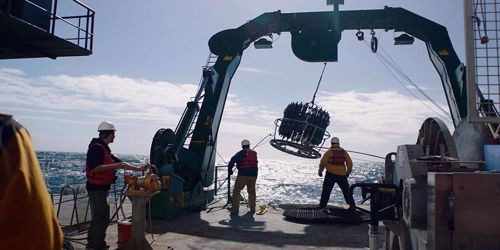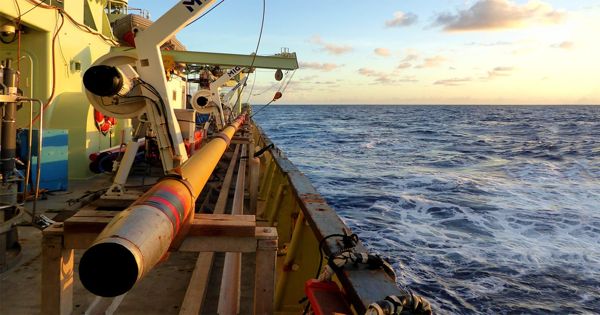Applications of Powder X-ray diffraction in Oceanic Mineralogy Research
Some of the approaches widely used to track climate change and ocean acidification have major drawbacks considering the fact that trends have been studied for decades. For example, scientists rely on numerical models to calculate the acidity of vast parts of the ocean instead of small samples of water; these models may include their own variables and assumptions.
X-ray diffraction (XRD) is a flexible and non-destructive analytical tool that can easily extract accurate structural and phase details on materials. XRD analysis offers qualitative and quantitative information on minerals or phases in a broad variety of geological resources investigated in a research laboratory or processed for industrial applications.
Geology and mining areas are of great economic and technical significance in the production of important raw materials (ores, minerals) for industrial manufacturing and applications for our day-to-day use. Their discovery, profit, and processing are critically dependent on their chemical and mineralogical consistency, which determines their importance for downstream applications.
Seawater has an average pH of 8.2, which means that it is typically similar to neutral but slightly basic. However, the water can be turned more acidic by dissolving CO2 from the atmosphere. Species that dwindle or die with time are among the catastrophic consequences on aquatic life that can be caused even by a minor decline in the pH of the water. This means that gathering reliable data from the ocean as a whole is not only a huge task, it is also vital.

Dr. Aaron Celestian of the Los Angeles County Natural History Museum (NHMLAC) and his colleagues at the University of Southern California and Caltech are researching ocean acidity to collect valuable results. Celestian is NHMLAC’s curator for geological sciences and specializes in mineral formation and interaction, especially researching how to inform climate change. Dr. Celestian researched aquatic animals to help understand the behavior of ocean minerals, primarily looking at animals whose shells are made up of carbon-bearing minerals, aragonite, and calcite, various crystalline types (polymorphs) of calcium carbonate.
Celestian and his colleagues can obtain a greater understanding of the variations in seawater acidity by acquiring more knowledge of the stability of the minerals in the shells of these species. The carbon-bearing minerals used to make shells and corals are, according to Celestian, prone to acidic water at different degrees. For example, aragonite is more prone to low pH levels because it has nine calcium-bound oxygen atoms, rendering its bonds weaker than those of calcite. Conversely, the bonds of calcite are less likely to split since they have six oxygen atoms bonded to calcium. Shell structures can be slightly distorted, making them less stable, when magnesium is present in the water because it often substitutes for some of the calcium atoms in calcite.
In order to investigate the susceptibility of these organisms to acidic water, special equipment is required. Celestian and the C DisK-IV (Carbon Dissolution Kinetics) team have been merging x-ray diffraction (XRD) with marine mineralogy to more fully understand samples of ocean water obtained during several expeditions across the Pacific Ocean.
Their most recent journey saw a party moving from Hawaii to Alaska in the summer of 2017. Previous research has measured dissolved carbon and ocean pH; however, this expedition additionally established the concentration of carbonate minerals in seawater and measured the rate at which these minerals dissolve. Together, this study will give useful insight into how ocean acidification has evolved over time. During their travels, the party gathered sediments from the seafloor using a multi-corer and using seawater pumps to remove water from many different depths.
The scientists then used the Proto AXRD® powder diffractometer to analyze the material of the filter samples. Powder XRD research is suitable for the characterization of crystalline materials, indicating that the percentages of calcium carbonate polymorphs could be estimated at different ocean depths along the pathway.
The group defined the ratio of aragonite to calcite in the water during their trip using XRD. Stable aragonite was detected at a deeper depth in water samples taken near Hawaii; in contrast, aragonite stability was observed at shallower depths as it traveled towards Alaska. They concluded that Alaskan waters were more acidic since aragonite was not stable below a depth of 200 meters.
Animals that form shells will have trouble preserving their shape while the pH of the oceans is smaller, causing them to spend more resources on shaping and restoring their shells. Additional energetic demands can cause animals to lose their ability to reproduce and survive, resulting in a decline in population. XRD is a valuable instrument in the continuing study of how mineral activity informs ocean acidity.















